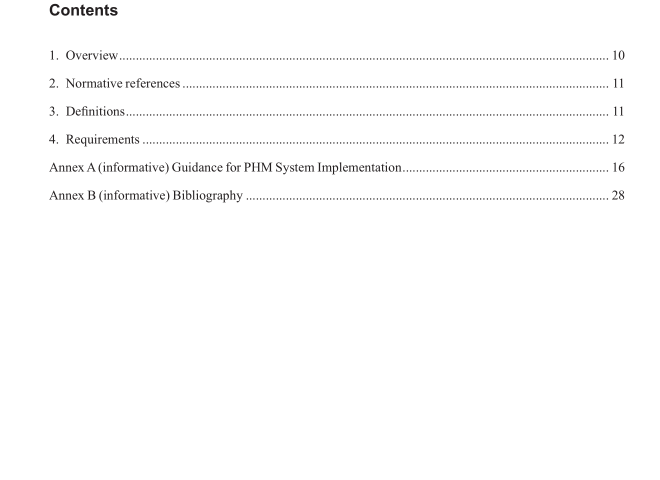IEEE 1856-2017 pdf download.IEEE Standard Framework for Prognostics and Health Management of Electronic Systems
The goal of this standard is to provide information for the implementation of prognostics and health management (PHM) for electronic systems. Within the system health management community, there are several diferent interpretations of the term prognostics, such as predictive analysis, reliability prediction, damage accumulation prediction, or condition-based prediction. This standard can be used by manufacturers and end users for planning the appropriate prognostics and health management methodology to implement and the associated life cycle operations for the system of interest.
This standard aims to provide practitioners with information that will help them make business cases for PHM implementation and select proper strategies and performance metrics to evaluate PHM results. The overall aim is to provide a broad overview of PHM while at the same time provide signifcant details to assist the practitioner in making appropriate decisions.
1.2 Scope
This standard covers all aspects of PHM of electronic systems, including defnitions, approaches, algorithms, sensors and sensor selection, data collection, storage and analysis, anomaly detection, diagnosis, decision and response efectiveness, metrics, life cycle cost of implementation, return on investment, and documentation. This standard describes a normative framework for classifying PHM capability and for planning the development of PHM for an electronic system or product. The use of this standard is not required throughout the industry 1 . This standard provides information to aid practitioners in the selection of PHM strategies and approaches to meet their needs.
1.3 Purpose The purpose of this standard is to classify and defne the concepts involved in PHM of electronic systems and to provide a standard framework that assists practitioners in the development of business cases and the selection of approaches, methodologies, algorithms, condition monitoring equipment, procedures, and strategies for implementing PHM of electronic systems.
2. Normative references
The following referenced documents are indispensable for the application of this document (i.e., they must be understood and used, so each referenced document is cited in text and its relationship to this document is explained). For dated references, only the edition cited applies. For undated references, the latest edition of he referenced document (including any amendments or corrigenda) applies.
IEEE Std 15288, Systems and software engineering—System life cycle processes. 2,3
IEEE Std 12207, Systems and software engineering—Software life cycle processes.
3. Defnitions
For the purposes of this document, the following terms and defnitions apply. The IEEE Standards Dictionary Online should be consulted for terms not defned in this clause. 4
data management: The function of controlling the acquisition, analysis, storage, retrieval, and distribution of data.
decision time: The measure of how quickly a response decision is made, given a set of diagnostic and prognostic inputs.
detection accuracy: A quantifcation of the number of correctly detected failure cases, often expressed as a ratio of correctly classifed cases to the total number of scenarios.
detection time: The measure of how quickly an of-nominal condition is detected and measured from the time the physical behavior being monitored exhibits failed, degraded, or anomalous behavior.
diagnostic time: The measure of how quickly a fault is isolated and (if required) identifed, given a set of failure and anomaly detection inputs.
diagnostics: The action of determining the cause of an error in location and nature.
NOTE—This is a fault discovery approach that involves two steps: fault isolation and fault identifcation. First, the location of the fault is determined (fault isolation). Then, the type of fault is identifed (fault identifcation).
end-of-life: The moment in time when a component or a system does not perform its intended function within desired specifcations (Saxena, et al., 2008 [B15]).
NOTE—End-of-life is equivalent to end-of-useful-life.
health: Summary information regarding the current ability of a system or subsystem to perform its intended function.
NOTE—A product’s health state is not always directly observed and hence it is estimated.
health management: The process of decision-making and implementation of actions based on the estimate of the state of health derived from health monitoring and expected future use of the system.IEEE 1856 pdf download.IEEE 1856-2017 pdf download
IEEE 1856-2017 pdf download

Leave a Reply